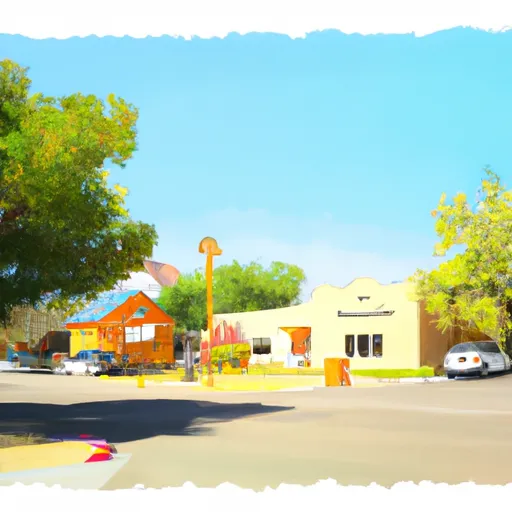-
 Snoflo Premium
Snoflo Premium
Get unlimited access to all our content
With no Ad interruptions! - Start Your Free Trial Login with existing account
Madeline
Eden Index
Climate
5.6
•
Recreation
•
Community
•
Safeguard
2.2/10

Madeline, California is a small unincorporated community located in Lassen County, in the northeastern part of the state. The region experiences a semi-arid climate with hot, dry summers and cold winters. Summers are characterized by average high temperatures in the 80s°F (27-32°C) and occasional thunderstorms. Winters bring cooler temperatures with highs in the 40s°F (4-9°C) and occasionally dropping below freezing.
Hydrologically, Madeline is situated in the Honey Lake Valley, which is part of the Great Basin watershed. The region is primarily composed of arid grassland and sagebrush, with the absence of major rivers or lakes. However, Honey Lake, a large alkaline lake, is located nearby, offering opportunities for fishing, boating, and birdwatching.
Madeline provides a range of outdoor recreational activities. The surrounding area is known for its scenic landscapes, offering opportunities for hiking, camping, and horseback riding. Additionally, the nearby Modoc National Forest provides further recreational possibilities, including hunting, fishing, and off-road vehicle trails. The region's diverse wildlife, including deer, coyotes, and a variety of bird species, also attracts nature enthusiasts and photographers. Madeline offers a tranquil and picturesque setting for those seeking outdoor adventures in a semi-arid environment.
What is the Eden Index?
The Snoflo Eden Index serves as a comprehensive rating system for regions, evaluating their desirability through a holistic assessment of climate health, outdoor recreation opportunities, and natural disaster risk, acknowledging the profound impact of these factors on livability and well-being.
Climate Health Indicator (CHI): 5.6
Madeline receives approximately
314mm of rain per year,
with humidity levels near 86%
and air temperatures averaging around
7°C.
Madeline has a plant hardyness factor of
5, meaning
plants and agriculture in this region thrive during a short period during spring and early summer. Most
plants will die off during the colder winter months.
By considering the ideal temperature range, reliable water supplies, clean air, and stable seasonal rain or snowpacks, the Climate Health Indicator (CHI) underscores the significance of a healthy climate as the foundation for quality living.
A healthy climate is paramount for ensuring a high quality of life and livability in a region, fostering both physical well-being and environmental harmony. This can be characterized by ideal temperatures, reliable access to water supplies, clean air, and consistent seasonal rain or snowpacks.
Weather Forecast
Streamflow Conditions
North Lahontan
Area Rivers
North Lahontan
Snowpack Depths
North Lahontan
Reservoir Storage Capacity
North Lahontan
Groundwater Levels
Recreational Opportunity Index (ROI):
The Recreational Opportunity Index (ROI) recognizes the value of outdoor recreational options, such as parks, hiking trails, camping sites, and fishing spots, while acknowledging that climate plays a pivotal role in ensuring the comfort and consistency of these experiences.
Access to outdoor recreational opportunities, encompassing activities such as parks, hiking, camping, and fishing, is crucial for overall well-being, and the climate plays a pivotal role in enabling and enhancing these experiences, ensuring that individuals can engage in nature-based activities comfortably and consistently.
Camping Areas
| Campground | Campsites | Reservations | Toilets | Showers | Elevation |
|---|---|---|---|---|---|
| North Eagle Lake | 20 | 5,148 ft |
Nearby Fishing
Nearby Ski Areas
Catastrophe Safeguard Index (CSI):
The Catastrophe Safeguard Index (CSI) recognizes that natural disaster risk, encompassing floods, fires, hurricanes, and tornadoes, can drastically affect safety and the overall appeal of an area.
The level of natural disaster risk in a region significantly affects safety and the overall livability, with climate change amplifying these risks by potentially increasing the frequency and intensity of events like floods, fires, hurricanes, and tornadoes, thereby posing substantial challenges to community resilience and well-being.
Community Resilience Indicator (CRI):
The Community Resilience Indicator (CRI) recognizes that education, healthcare, and socioeconomics are crucial to the well-being of a region. The CRI acknowledges the profound impact of these elements on residents' overall quality of life. By evaluating educational resources, healthcare accessibility, and economic inclusivity, the index captures the essential aspects that contribute to a thriving community, fostering resident satisfaction, equity, and social cohesion.

